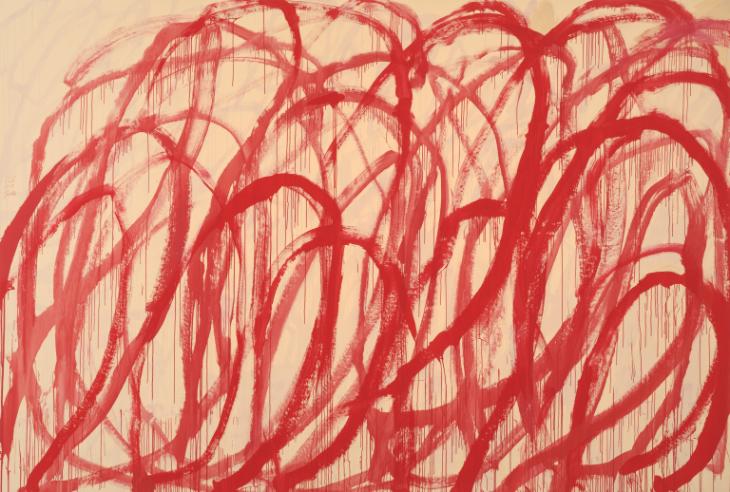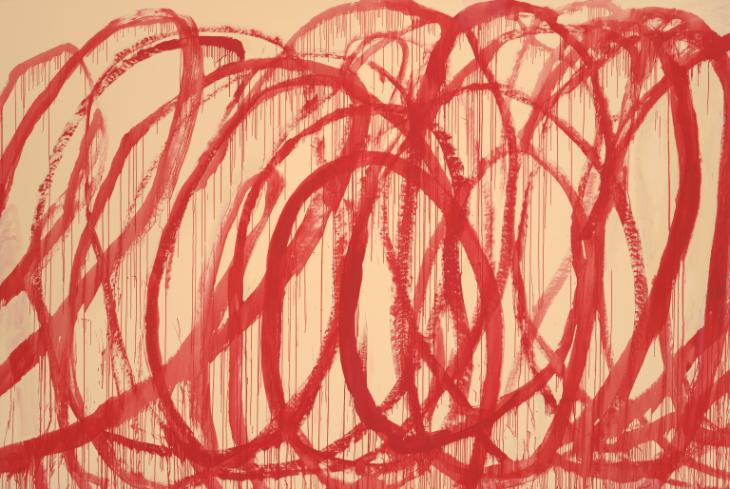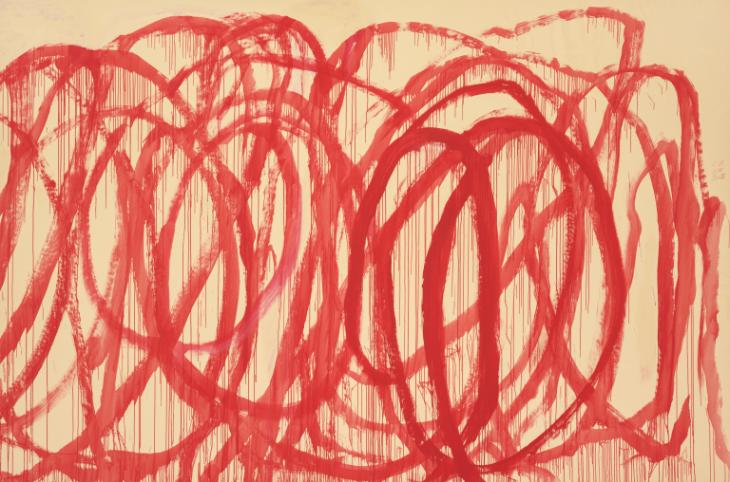Myths, legends, and folk tales have inspired many artists throughout history. Heroes, gods, goddesses, and monsters are rich sources for exciting artworks. We can mention several big artists’ names who were inspired by myths and legends, from J.M.W. Turner’s Apollo and Python, Salvador Dali’s Metamorphosis of Narcissus, Sandro Botticelli’s The Birth of Venus, to Yayoi Kusama’s Narcissus Garden.
Edwin Parker “Cy” Twombly (1928-2011) is one of the artists who is inspired by mythological figures and classic poetry. He was a North American painter, sculptor, and photographer who was fascinated by the cultures of ancient Greece and Rome.

Cy Twombly, Untitled (Bacchus) 2008. Presented by the Cy Twombly Foundation 2014. Courtesy of Artist and Tate. http://www.tate.org.uk/art/work/T14081

Cy Twombly, Untitled (Bacchus) 2008. Presented by the Cy Twombly Foundation 2014. Courtesy of Artist and Tate. http://www.tate.org.uk/art/work/T14079

Cy Twombly, Untitled (Bacchus) 2008. Presented by the Cy Twombly Foundation 2014 http://www.tate.org.uk/art/work/T14080
In 2008, Cy Twombly created a red swirls painting named Bacchus. Twombly made the swirls with a brush soaked in paint that dripped down on the canvas. This painting is full of energy, power, and passion. The spiral forms imply continuity, unbroken movement, and eternity.
Twombly’s Bacchus is expressive, abstract, and imaginative. It can be compared to other works whose almost the same subjects, like Titian’s Bacchus and Ariadne (1522-1523) and Frank Auerbach’s Bacchus and Ariadne (1971).
Titian, Bacchus and Ariadne (1522-1523). National Gallery, London. https://www.tate.org.uk/art/student-resource/exam-help/myths-and-legends
Frank Auerbach, Bacchus and Ariadne (1971). Courtesy of Artist and Tate. http://www.tate.org.uk/art/work/T06687
Bacchus (in Roman) or Dionysus (in Greek) is a god of wine and dances. He is known for his rituals of drunkenness and ecstatic dancing. In the Birth of Tragedy, Friedrich Nietzsche portrayed the duality between the figures of Apollo and Dionysus in Ancient Greek culture. Apollo is the god of the sun, which represents rational thinking and order. On the other hand, Dionysus was related to irrationality, chaos, emotions, and instincts. However, without Dionysian, culture will be lacking vitality and passion.
More than 50 years before Bacchus, Twombly painted The Song of the Border-Guard (1952). It is an abstract painting of black brush strokes on a red background. Twombly was fascinated by Homer’s story of the Trojan War in The Iliad. He made several chariot-like sculptures and paintings, including this painting.
Cy Twombly, The Song of the Border-Guard 1952. Cy Twombly Foundation. http://www.tate.org.uk/art/work/P77550
Twombly’s artworks are influenced by Franz Kline’s black-and-white Abstract Expressionism and Paul Klee’s childlike paintings. Twombly studied at the School of the Museum of Fine Arts Boston, then attended Black Mountain College near Asheville, North Carolina, where he made artworks under Franz Kline.
Twombly has traveled to North Africa, Spain, Italy, and France. After he worked in two places (1955-1959), New York and Italy, he decided to settle in Rome. In Italy, he tried to explore on a larger scale of work, turned into literal use of text and numbers, and drew inspiration from poetry, mythology, and classical history.
Twombly is best known for his large-scale, freely scribbled, calligraphic, and graffiti-like on solid colors paintings. He has influenced the younger generation of artists such as Anselm Kiefer, Francesco Clemente, and Julian Schnabel.
Twombly has exhibited his works in many international events and museums, such as Venice Biennale (1964), the Milwaukee Art Centre (1968), Kunsthaus Zürich, Zurich (1987), Musée national d’art moderne, Centre Pompidou, Paris (1988), Museum of Modern Art, New York (1994), Pinakothek der Moderne, Munich (2006), Tate Modern, London (2008), and Art Institute of Chicago (2009). In 1995, the Cy Twombly Gallery was opened in Houston. This Gallery is exhibiting works made by the artist after 1954.
Bacchus and other Twombly’s works are on view at Tate Modern, London.
